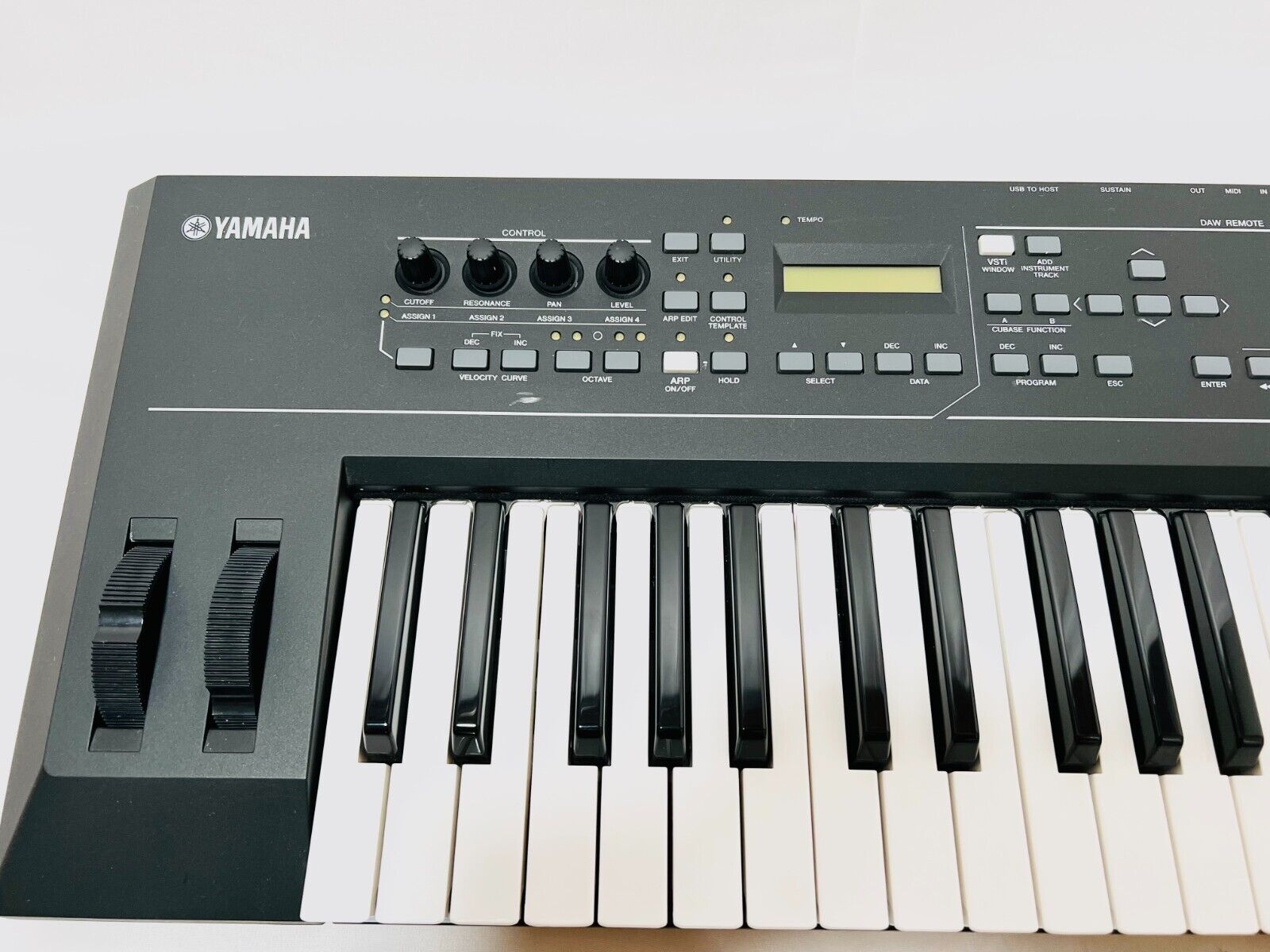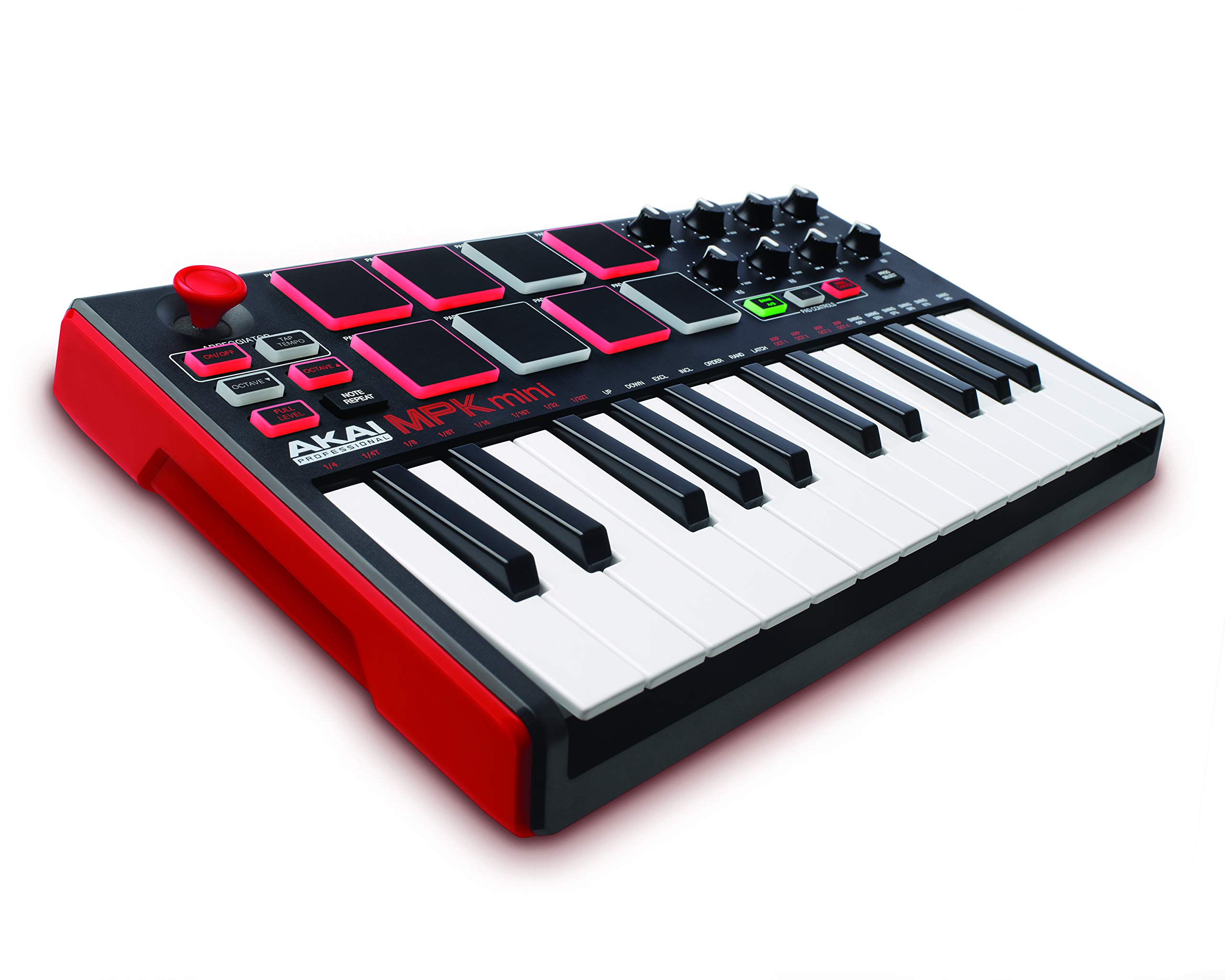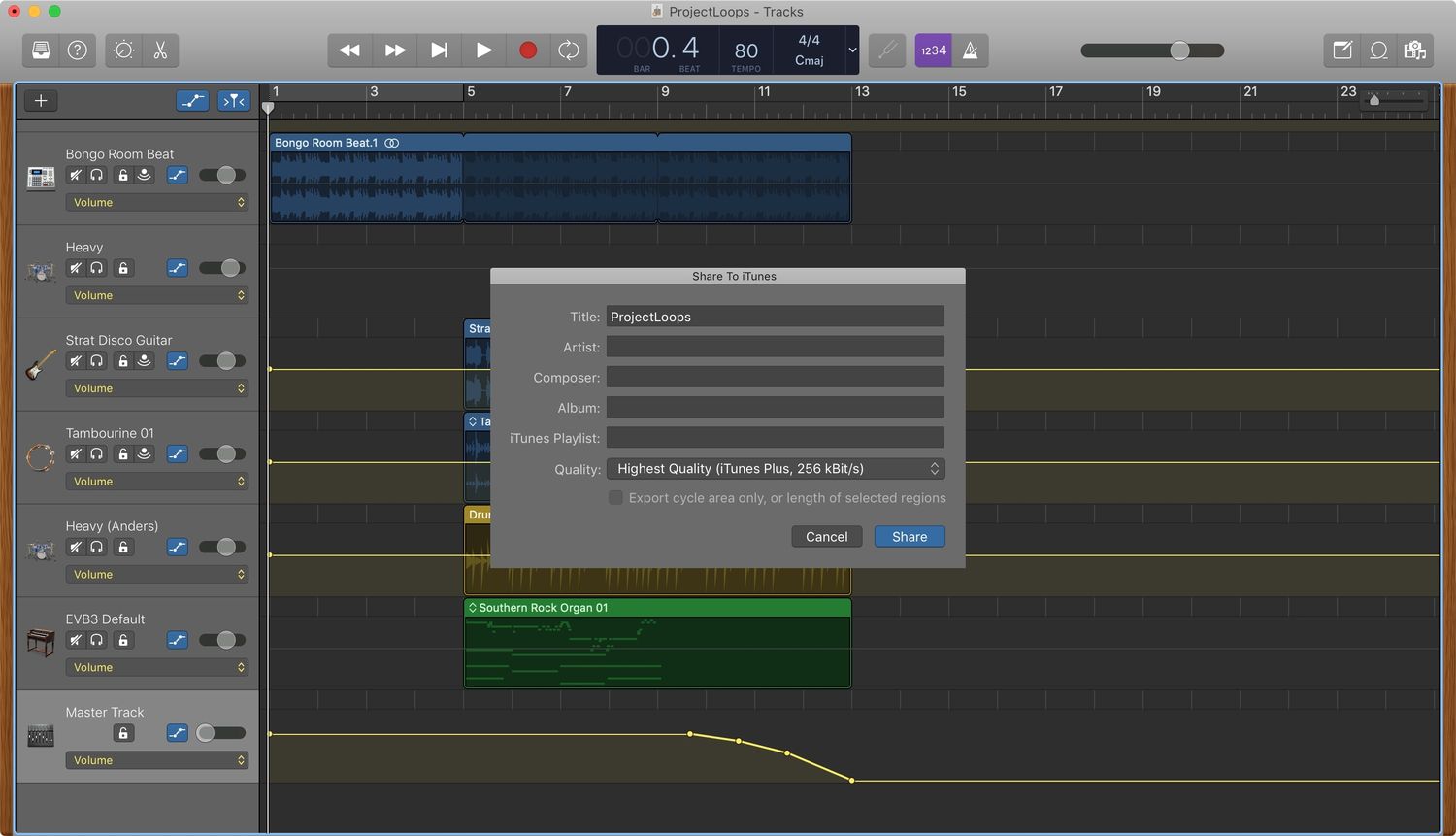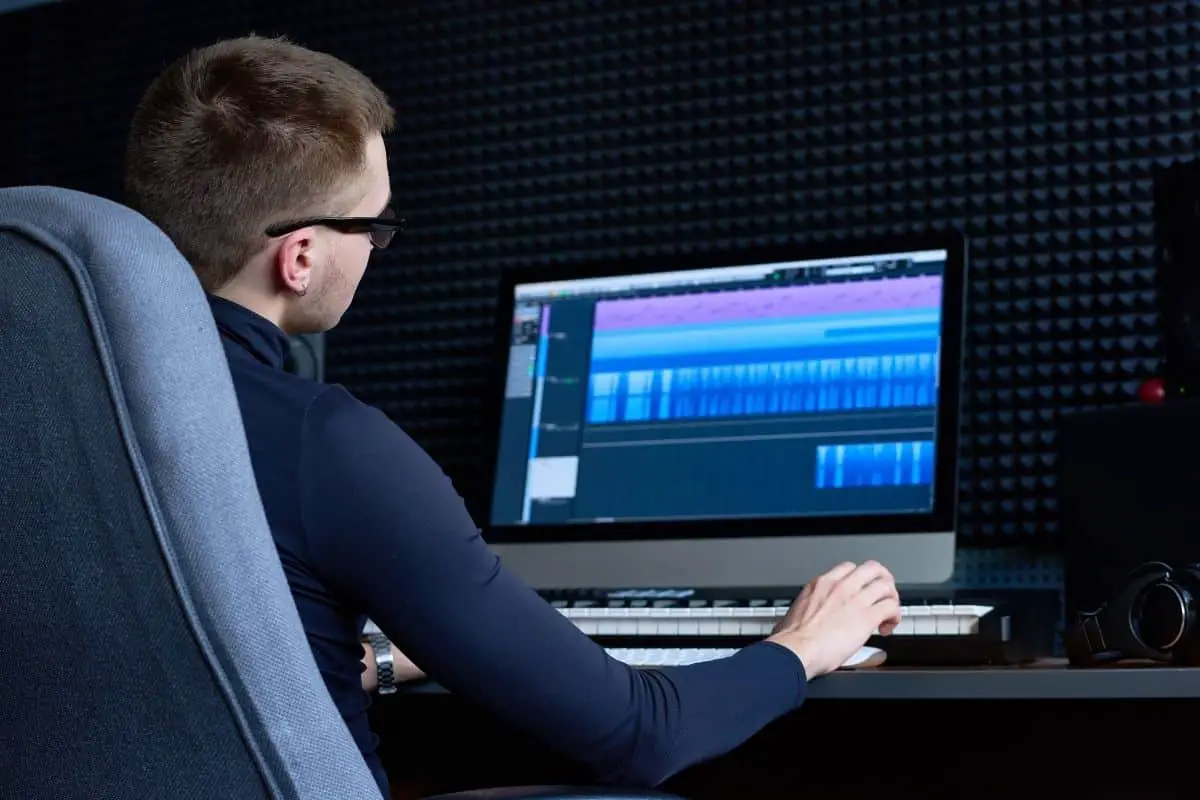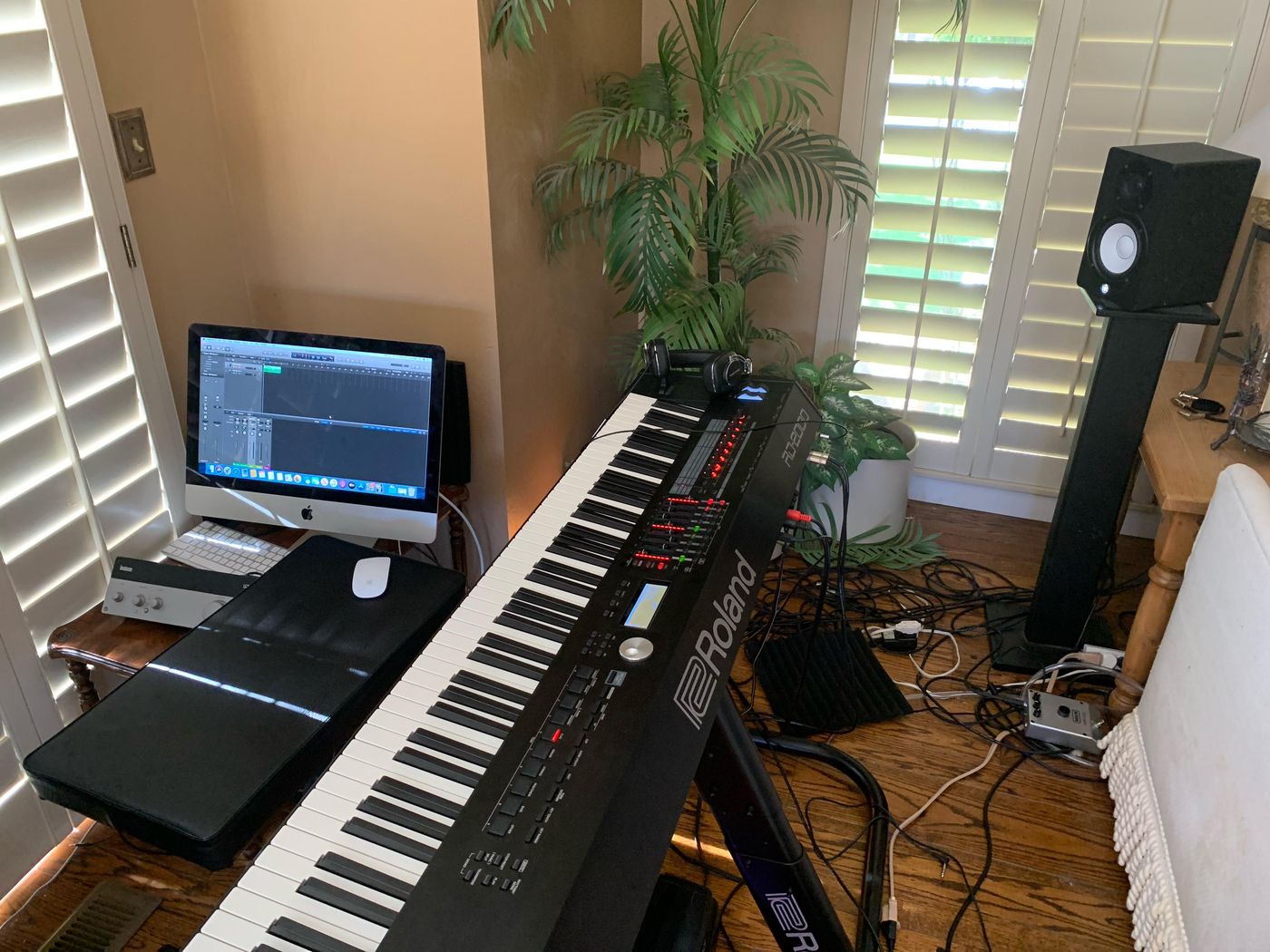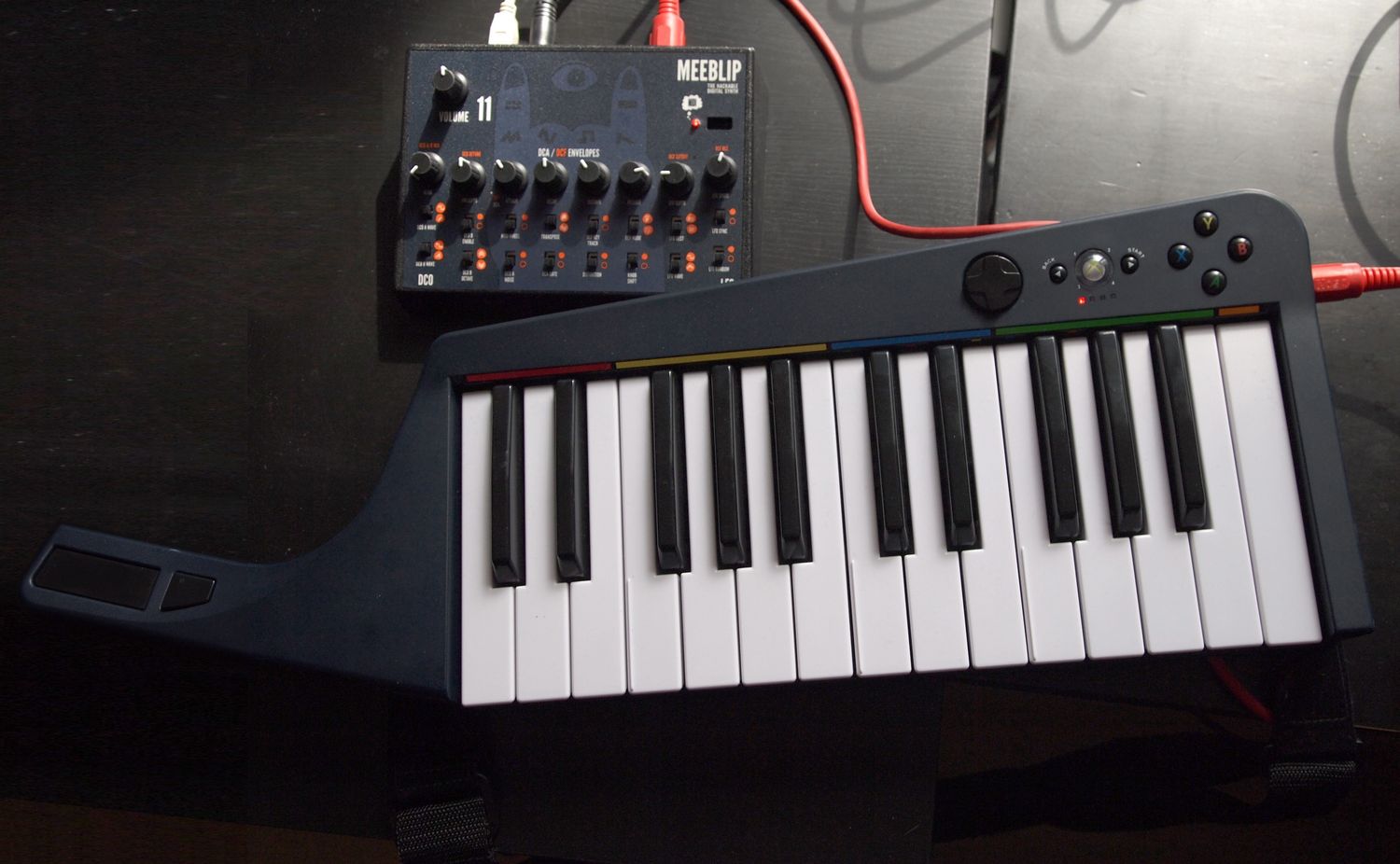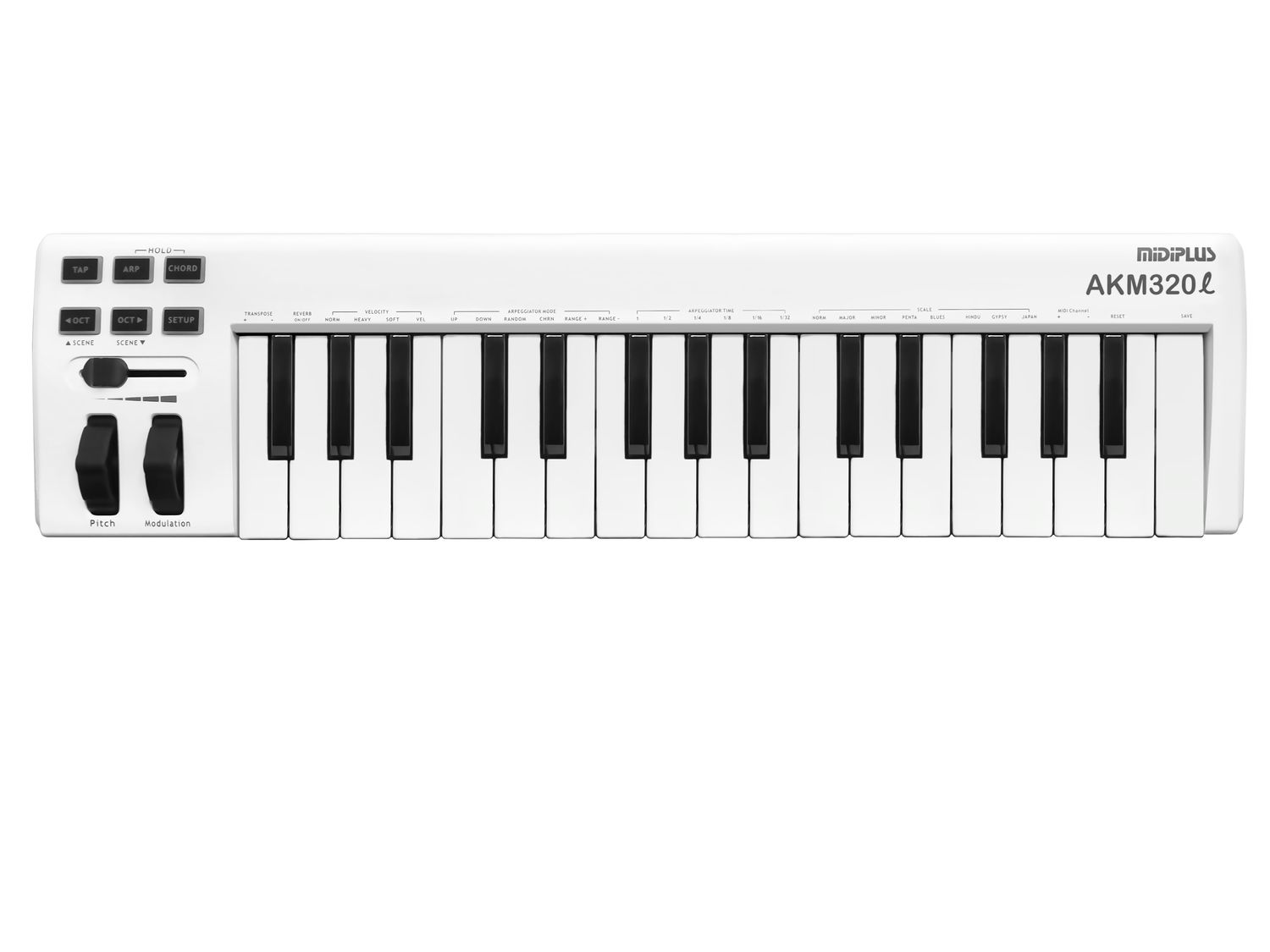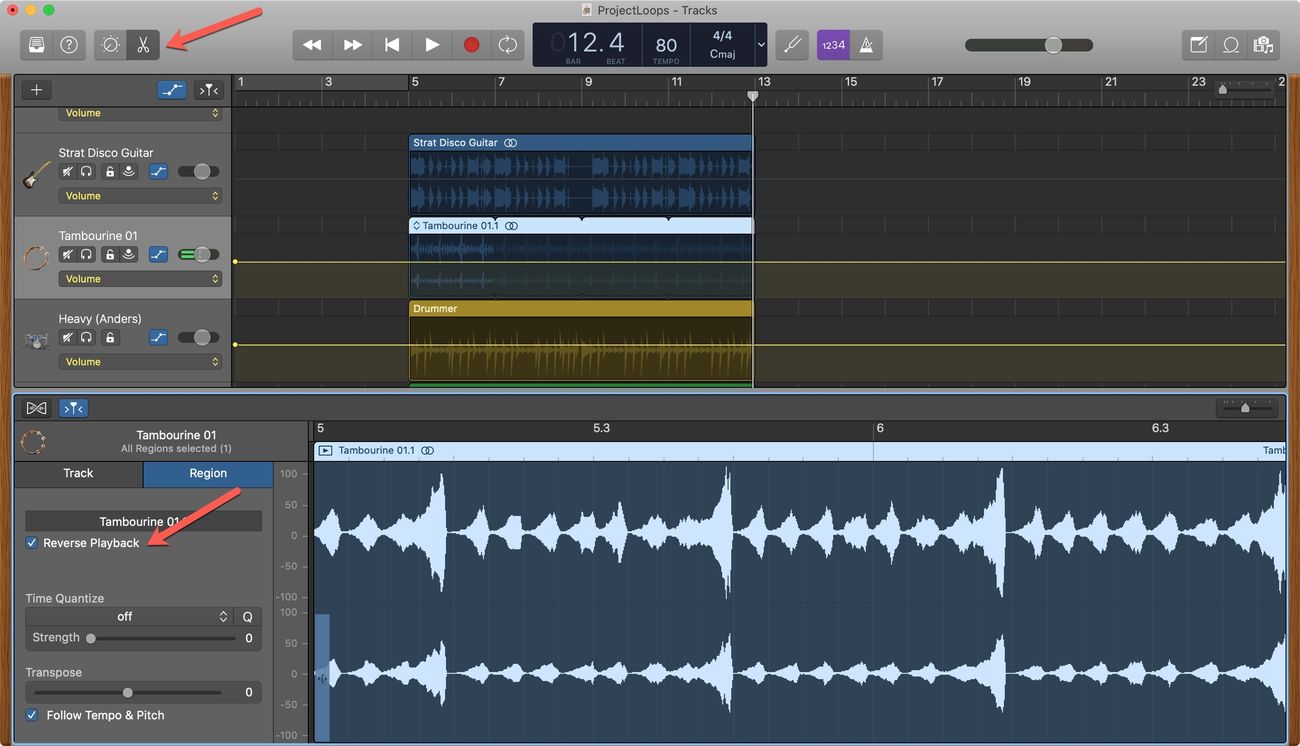Home>Production & Technology>MIDI>How To Use Garageband With A MIDI Keyboard
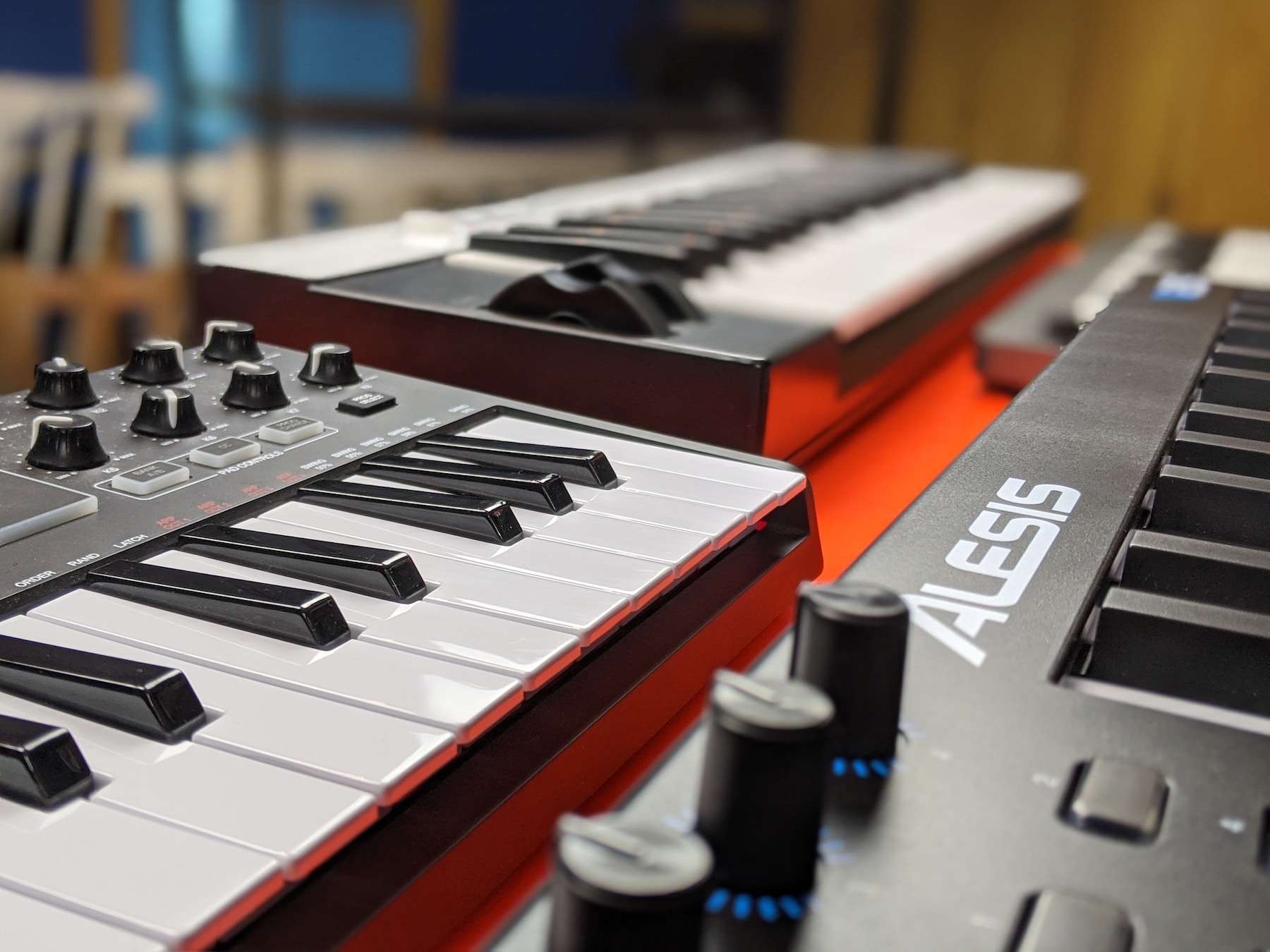

MIDI
How To Use Garageband With A MIDI Keyboard
Published: February 21, 2024
Learn how to connect and use a MIDI keyboard with Garageband to create professional music. Discover MIDI keyboard tips and tricks for optimal performance.
(Many of the links in this article redirect to a specific reviewed product. Your purchase of these products through affiliate links helps to generate commission for AudioLover.com, at no extra cost. Learn more)
Table of Contents
Introduction
Are you a music enthusiast looking to elevate your music production skills? If so, you've come to the right place. In this article, we will delve into the fascinating realm of MIDI keyboards and explore how they can be seamlessly integrated with Garageband to enhance your music creation process.
MIDI, which stands for Musical Instrument Digital Interface, has revolutionized the way music is created, recorded, and produced. MIDI keyboards, in particular, serve as versatile tools that allow musicians and producers to express their creativity in a digital environment. When paired with Garageband, Apple's renowned music production software, MIDI keyboards unlock a world of possibilities, enabling users to harness the power of technology to craft professional-grade music.
Throughout this article, we will provide you with a step-by-step guide on setting up your MIDI keyboard with Garageband, using it to record and edit music, and leveraging its capabilities to add effects and adjust settings seamlessly. Whether you're a seasoned musician or a budding producer, understanding how to harness the potential of MIDI keyboards within Garageband can significantly enhance your music production endeavors.
So, buckle up and get ready to embark on a journey that will empower you to explore the boundless horizons of music creation with the perfect fusion of technology and creativity. Let's dive into the intricacies of integrating your MIDI keyboard with Garageband and uncover the endless possibilities that await you in your musical odyssey.
Setting up your MIDI Keyboard with Garageband
Setting up your MIDI keyboard with Garageband is an essential first step in unleashing its full potential for music creation. Whether you're a seasoned musician or a novice producer, integrating your MIDI keyboard with Garageband opens up a world of possibilities for crafting captivating melodies and harmonies. Here's a comprehensive guide to help you seamlessly set up your MIDI keyboard with Garageband and embark on your musical journey:
1. Connecting Your MIDI Keyboard:
The initial step in setting up your MIDI keyboard with Garageband involves establishing a physical connection. Most MIDI keyboards feature a USB connection, allowing for straightforward integration with your computer. Simply connect the USB cable from your MIDI keyboard to an available USB port on your computer. Once connected, your MIDI keyboard should be recognized by Garageband, paving the way for a seamless integration process.
2. Configuring Garageband Preferences:
After connecting your MIDI keyboard, it's essential to configure Garageband to recognize and utilize the MIDI input. Open Garageband and navigate to the "Garageband" menu at the top-left corner of the screen. Select "Preferences," followed by "Audio/MIDI." Within the MIDI section, ensure that your MIDI keyboard is listed and enabled as an input device. This step ensures that Garageband can effectively communicate with your MIDI keyboard, allowing for a smooth and responsive music-making experience.
3. Selecting Your MIDI Keyboard as the Input Device:
With the preferences configured, it's time to select your MIDI keyboard as the input device within Garageband. Create a new project or open an existing one, and navigate to the track header area. Click on the "Input" button and choose your MIDI keyboard from the list of available input devices. This step establishes your MIDI keyboard as the primary input for recording and playing music within Garageband.
4. Testing the Connection:
Before diving into your music creation endeavors, it's prudent to test the connection between your MIDI keyboard and Garageband. Play a few notes on your MIDI keyboard and ensure that Garageband accurately registers the input. Additionally, verify that the MIDI keyboard's controls, such as pitch bend and modulation wheels, are effectively recognized by Garageband. This step allows you to confirm that the integration is successful and that your MIDI keyboard is ready for seamless interaction with Garageband.
By following these steps, you can effectively set up your MIDI keyboard with Garageband, laying the foundation for a seamless and immersive music production experience. With the integration complete, you're now poised to explore the myriad features and functionalities of Garageband, leveraging the expressive capabilities of your MIDI keyboard to bring your musical ideas to life.
Using MIDI Keyboard to record and edit music in Garageband
Once your MIDI keyboard is seamlessly integrated with Garageband, you're ready to harness its full potential for recording and editing music. The MIDI keyboard serves as a versatile tool for capturing your musical ideas with precision and expressive flair. Here's a detailed exploration of how you can leverage your MIDI keyboard to record and edit music in Garageband, elevating your music production endeavors to new heights.
1. Recording Music:
With your MIDI keyboard set up as the input device in Garageband, recording music becomes an intuitive and dynamic process. Whether you're laying down melodic lines, harmonies, or intricate chord progressions, the MIDI keyboard enables you to capture your musical performances with remarkable accuracy. As you play the keys on your MIDI keyboard, Garageband translates your input into MIDI data, allowing for seamless recording of your musical expressions. This method of recording provides a level of nuance and articulation that is synonymous with live performances, infusing your music with a sense of authenticity and emotion.
2. Editing MIDI Data:
Garageband empowers you to delve into the intricacies of MIDI data editing, offering a myriad of tools and functionalities to refine and enhance your recorded performances. With your MIDI keyboard as the primary input device, you can effortlessly manipulate note velocities, adjust timing, and fine-tune the musical nuances within your recordings. This level of precision and control ensures that your music resonates with the desired dynamics and articulation, elevating the overall quality of your compositions. Whether you're correcting subtle timing imperfections or infusing your recordings with expressive variations, the MIDI keyboard serves as a conduit for shaping and refining your musical creations with unparalleled finesse.
3. Exploring Musical Expressiveness:
The expressive capabilities of a MIDI keyboard are a cornerstone of its appeal in music production. Garageband provides a platform for exploring and amplifying this expressiveness, allowing you to imbue your recordings with a rich tapestry of musical nuances. From adjusting the intensity of note velocities to incorporating pitch bend and modulation effects, the MIDI keyboard empowers you to infuse your recordings with a sense of depth and emotion. By leveraging the tactile nature of the MIDI keyboard, you can breathe life into your music, transcending the boundaries of traditional recording methods and immersing yourself in a realm of limitless creative possibilities.
In essence, the integration of a MIDI keyboard with Garageband opens up a world of opportunities for recording and editing music with precision, passion, and creativity. By embracing the expressive potential of your MIDI keyboard within Garageband, you can embark on a musical journey that transcends conventional boundaries, allowing your artistic vision to flourish with every note and every edit.
Adding effects and adjusting settings with MIDI Keyboard
Once your MIDI keyboard is seamlessly integrated with Garageband, you gain the ability to leverage its tactile interface to add captivating effects and fine-tune settings with remarkable precision. This integration introduces a dynamic dimension to your music production process, allowing you to infuse your compositions with a diverse range of effects and meticulously adjust settings to achieve the desired sonic landscape. Let's delve into the intricacies of adding effects and adjusting settings with your MIDI keyboard in Garageband, unlocking a realm of creative possibilities.
1. Real-time Control of Effects:
With your MIDI keyboard serving as a versatile control surface, you can harness its tactile controls to manipulate a myriad of effects within Garageband in real time. Whether you seek to modulate the intensity of reverb, sculpt the character of a synthesizer, or dynamically alter the parameters of an effect plugin, the tactile knobs, sliders, and wheels of your MIDI keyboard provide an intuitive means to interact with these elements. This real-time control capability empowers you to infuse your music with expressive variations, adding a layer of dynamism that resonates with the essence of live performance.
2. Parameter Mapping and Customization:
Garageband offers extensive flexibility in mapping MIDI controls to various effect parameters, allowing you to tailor the behavior of your MIDI keyboard to suit your creative preferences. By customizing the MIDI mapping, you can assign specific controls on your MIDI keyboard to manipulate parameters such as filter cutoff, resonance, delay feedback, and more. This level of customization grants you the freedom to sculpt your sound in a deeply personalized manner, fostering an intimate connection between your musical instincts and the sonic textures you aim to craft.
3. Dynamic Modulation and Expression:
The MIDI keyboard's modulation and pitch bend wheels serve as potent tools for infusing your music with dynamic expression. These controls enable you to introduce subtle or dramatic pitch variations, modulate the intensity of effects, and imbue your performances with a nuanced sense of musical expression. Whether you're aiming to create ethereal pitch bends, evoke emotive swells, or introduce dramatic tonal shifts, the tactile nature of the MIDI keyboard empowers you to shape your music with an unparalleled degree of expressiveness.
4. Seamless Navigation and Workflow Enhancement:
Beyond effect manipulation, the integration of your MIDI keyboard with Garageband streamlines your workflow by providing intuitive navigation and control capabilities. From triggering looped sections and controlling playback to seamlessly navigating through your project, the tactile interface of the MIDI keyboard enhances your interaction with Garageband, fostering a fluid and immersive music production experience.
In essence, the integration of a MIDI keyboard with Garageband transcends traditional input methods, offering a gateway to a world of dynamic effect manipulation, parameter customization, and expressive control. By harnessing the tactile interface of your MIDI keyboard, you can sculpt your sonic landscapes with finesse, infusing your music with a rich tapestry of effects and finely-tuned settings that reflect your artistic vision.
Conclusion
In conclusion, the integration of a MIDI keyboard with Garageband heralds a transformative chapter in the realm of music production, offering a seamless fusion of technological innovation and creative expression. By following the comprehensive guide to setting up your MIDI keyboard with Garageband, you have unlocked a myriad of possibilities for recording, editing, and refining your musical creations with precision and artistry.
The tactile nature of the MIDI keyboard serves as a conduit for bridging the gap between traditional musical performance and digital production, empowering you to infuse your compositions with a rich tapestry of expressive nuances. From capturing the subtle dynamics of your performances to sculpting intricate melodies and harmonies with finesse, the MIDI keyboard amplifies your creative potential, allowing your musical ideas to flourish in a digital landscape.
Moreover, the real-time control capabilities of the MIDI keyboard enable you to add captivating effects, modulate parameters, and navigate through your project seamlessly, fostering a dynamic and immersive music production experience. Whether you seek to evoke emotive swells, sculpt intricate soundscapes, or dynamically manipulate effects with precision, the MIDI keyboard serves as a versatile tool for realizing your artistic vision with unparalleled finesse.
As you continue to explore the boundless horizons of music creation with your MIDI keyboard and Garageband, remember that the true essence of this integration lies in the seamless synergy between technology and creativity. It is a testament to the evolving landscape of music production, where traditional artistry converges with cutting-edge innovation to redefine the possibilities of musical expression.
So, as you embark on your musical odyssey with your MIDI keyboard and Garageband, embrace the endless possibilities that await you. Let your creativity flow, immerse yourself in the expressive capabilities of your MIDI keyboard, and sculpt sonic landscapes that resonate with the essence of your artistic vision. With the perfect fusion of technology and creativity, your musical journey knows no bounds, and the harmonies you weave will echo with the timeless allure of innovation and artistry.


